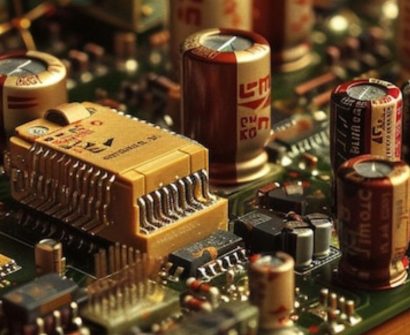
In the realm of Very-Large-Scale Integration (VLSI) design, every transistor plays a critical role. We relentlessly pursue optimization of circuits for area, power consumption, and timing. Boundary optimization, a frequently underappreciated technique, delivers significant benefits in this pursuit.
Boundary optimization in VLSI is a logic synthesis technique employed during the process of transforming your HDL code into an actual circuit. Its focus lies on the interfaces between distinct hierarchical blocks within your design.
How Does Boundary Optimization in VLSI Work?
Here’s a breakdown of how boundary optimization operates:
- Examining the Boundaries: Imagine each block (module) in your design as a black box. During boundary optimization, the synthesis tool has the ability to take a limited peek inside these boxes. It meticulously analyzes the signals entering and exiting each block.
- Eliminating Redundant Logic: If a constant value (like a logic 0 or 1) is feeding into a block, boundary optimization can directly push that constant value inside the block. This eliminates unnecessary logic, leading to a reduction in precious silicon area.
- Streamlining the Circuit: Sometimes, signals might be unconnected or permanently set to a specific value within a block. Boundary optimization can identify these and remove them, simplifying the circuit.
- Flipping for Efficiency: In some instances, inverting a signal outside a block might be more efficient than having logic perform the inversion inside. Boundary optimization can analyze this and potentially swap the signal and its inversion for enhanced performance.
Advantages of Boundary Optimization
Boundary optimization offers several compelling benefits:
- Reduced Area: By eliminating unnecessary logic and signals, boundary optimization can lead to a smaller chip footprint. This translates to cost savings and potentially allows for more functionality on the same chip.
- Improved Timing: A cleaner design with fewer gates can sometimes lead to faster signal propagation. This can be crucial for circuits where timing is critical.
- Enhanced Power Efficiency: Less logic generally means lower power consumption. Boundary optimization can contribute to a more power-efficient design.
Considerations for Boundary Optimization
While boundary optimization offers significant advantages, it’s not a universal solution. Here are some key points to consider:
- Balancing Automation and Control: Synthesis tools might offer options to control the aggressiveness of boundary optimization. This allows you to strike a balance between potential improvements and the complexity of the resulting design.
- Verification Importance: Since boundary optimization modifies the logic at the block boundaries, it’s essential to ensure proper functionality after this step. Rigorous verification is crucial to catch any unintended consequences.
Conclusion
Boundary optimization is a valuable tool for VLSI designers. By understanding its capabilities and limitations, you can leverage it to create more efficient and optimized circuits. Remember, it’s all about finding the right balance between automation and control to achieve the best possible design.
Also Read : fpga architecture in vlsi
To know more about VLSI Course , SuccessBridge VLSI training institute. You can begin your VLSI career by enrolling in the placement-assisted live courses available at SuccessBridge We offer various VLSI online courses. We offer VLSI Physical Design course, Design Verification course, DFT Training , Chip design course many more. Explore VLSI Courses From The Leaders In VLSI Training






